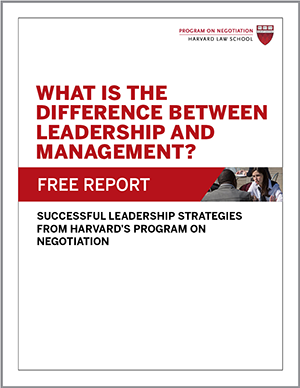
A series of aviation crises tied to aerospace giant Boeing has prompted renewed scrutiny of the company’s ethical leadership. The 2018 crash of Lion Air Flight 610, followed months later by the crash of Ethiopian Airlines Flight 302, brought serious flaws in the Boeing 737 MAX to light, issues the company was widely criticized for addressing too slowly. More recently, in 2024, a fuselage panel blew off a 737 MAX during flight, and Boeing’s Starliner space capsule left two astronauts stranded in orbit, further intensifying concerns about safety, accountability, and leadership at the company.
In fact, these are only the most recent in a “long list of ethical and criminal transgressions” by Boeing that date back to the late 1970s, according to Andy Pasztor, a reporter who covered Boeing for the Seattle Times for decades. These transgressions include illicitly procuring classified Pentagon documents, stealing a competitor’s rocket development documents, and committing quality-control violations.
The problems at Boeing fell into a dangerous pattern: After every scandal, the company’s top executives would express contrition and promise improvements, only for another violation to crop up soon after—followed by “even more fervent pledges to reform” from the top brass, according to Pasztor. That pattern has caught up with the company, which, as of October 2024, was $58 billion in debt and hemorrhaging $1 billion a month.
What explains the apparent dearth of ethical leadership at Boeing? A broken corporate culture has been to blame, with “slogans, public relations efforts and bureaucratic shuffles” taking the place of meaningful change, writes Pasztor.
In particular, an emphasis on short-term profitability and a move away from an “engineering-led culture toward more centralized corporate control” made Boeing engineers fearful of voicing their concerns about safety issues with managers, write Andrew Tangel and Jon Sindreu in the Wall Street Journal. “Time and again, Boeing executives emphasized they would focus on safety, engineering, and quality,” they report. The failure to maintain this focus highlights key issues relevant to ethics and leadership.
Threats to Ethical Leadership
Why did safety goals so often fall by the wayside at Boeing? Not because executives had ill intent but more likely because they were susceptible to common psychological processes that affect us all—and that are a particular threat to ethical leadership.
“Cognitive biases allow nice people to engage in unethical behavior without realizing that they are doing so,” write Don A. Moore and Max H. Bazerman in their book Decision Leadership: Empowering Others to Make Better Choices. “This lack of awareness constrains willful control over our ethical decisions, leading to bounded ethicality”—that is, “ethically questionable behaviors that fall short of [our] own values,” according to Moore and Bazerman.
Through a process that researchers Ann Tenbrunsel and David Messick have referred to as ethical fading, the ethical dimensions of our decisions can easily disappear from view in organizational decision making and compromise ethical leadership. “Common features of organizations can blind us to the ethical implications of a decision, leading us, for example, to classify a decision as a ‘business decision’ rather than as an ‘ethical decision’ and thus increasing the likelihood that we will behave unethically,” write Bazerman and Tenbrunsel in their book Blind Spots: Why We Fail to Do What’s Right and What to Do about It.
The Risks of “Stretch Goals”
Consider the roots of the Boeing 737 MAX disasters. In 2011, American Airlines told Boeing, its longtime airplane supplier, that it was considering placing an order with Boeing archrival Airbus for its next-generation aircraft, write Moore and Bazerman. To try to keep American’s business, James McNerney, then Boeing’s CEO, scrapped plans to develop a new, time-intensive airplane model and instead decided to update its 737 model. Executives set tight deadlines for the project, pushing engineers to complete their work in half the usual time.
“In setting goals for the new 737 MAX, Boeing behaved as if speed to market was the key performance metric,” write Moore and Bazerman. “In doing so, it neglected other legitimate concerns, including product safety. The result, we now know, has been devastatingly costly.”
“Stretch goals” that encourage workers to meet extremely ambitious targets often lead to flawed decisions and contribute to failed ethical leadership, according to Moore and Bazerman. That’s because leaders often frame stretch goals too narrowly. In the case of the 737 MAX reboot, the focus was on meeting a very tight deadline. This appeared to lead other important goals to fade from view, most notably quality and product safety. The U.S. Federal Aviation Administration enabled Boeing’s overly narrow focus on speed to market by allowing the company to make key testing and certification decisions.
“The biggest stretch goals also come with a substantial probability of failure,” warn Moore and Bazerman. Further, they advise leaders to avoid unwittingly encouraging unethical behavior by demanding results at any cost. Employees need to know that they will be praised rather than punished for putting on the brakes and raising red flags about safety issues, rule breaking, and other signs of trouble. Leaders can put in place incentives that reward workers for speaking up. They can also better conform to ethical leadership by prioritizing and articulating ethical concerns when setting goals.
How do you promote ethical leadership in your organization?




